
CA. #835032
(925) 595-5049
This box has entirely too many wires in it, so many that there was not enough room for the electrician to use wire nuts to splice the wires together. He merely twisted the wires together and then taped them. One of these connections became loose and resulted in a costly service call. This receptacle uses only three wires, so the unused spliced wires should not have been spliced at all in this box but rather they should have been pulled through unspliced to the next box down the line. This would have made room for wire nuts to be used for terminations. This is no doubt a good example of amatuer work. See picture at right for more.
Here you see a new GFCI receptacle outlet box has been added on top of the original outlet box. Removing the GFCI receptacle from the lower box created the needed room for wire nuts to be used to terminate the wires. The bottom box in this picture is the box seen in the picture at left.
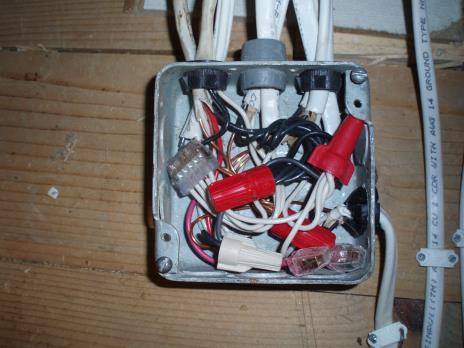
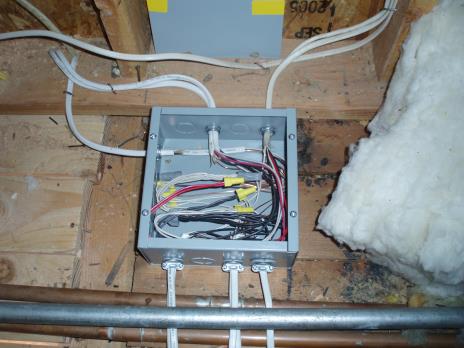
This box has way too many wires in it. It is rated for ten #14 wires, and it has twenty-one #14 wires in it. No legitimate electrician would have chosen to do this. Rather, he would have chosen a much larger box like the one in the picture to the right.
This is a much better installation. There is plenty of room for the electrician to work with the connections. This is done very well and shows knowledge and craftsmanship on the part of the electrician. This box replaced the one in the picture at left- same wires different box.
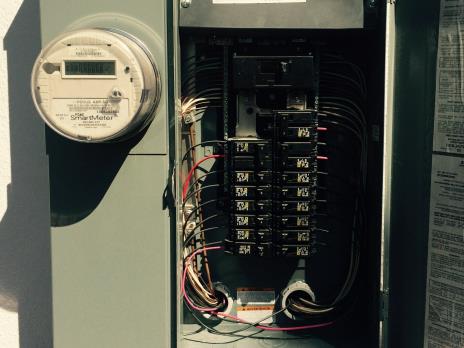
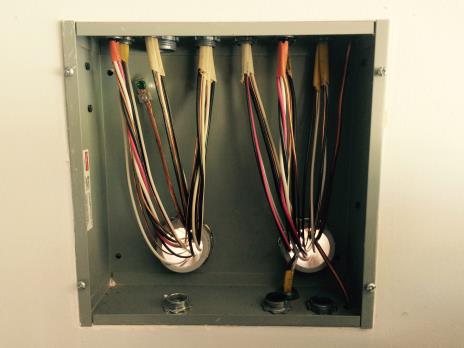
The conductors in this meter combination panel were very well installed and terminated. The two 2" pipes at the bottom come from a junction box mounted directly behind this panel inside the garage.
This junction/pull box was installed when the main panel was upgraded from 100 amps to 200 amps. You can see unused conduit entries on the top and bottom which can be used later for future circuit additions. The one at the top of the panel goes up into the attic, and the two at the bottom go to juction boxes just below this box. This reduces the need for drywall repairs when future circuits are added. The two 2" pipes at the bottom go the new meter combination panel seen in the picture at left.
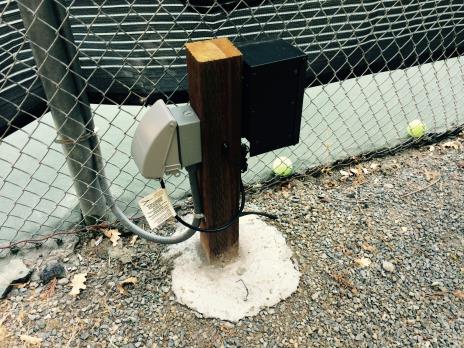
This power post was installed very well. It is set in concrete and should stand the test of time with people bumping into it, wheel barrows being run into it etc. The receptacle in the picture at right suffered a much worse fate.
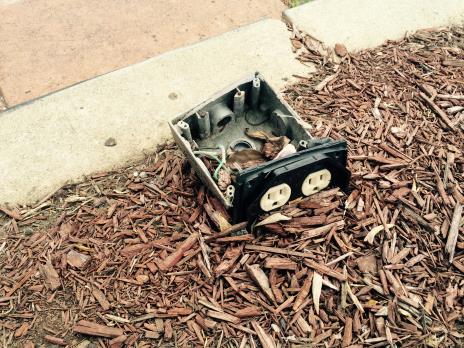
This receptacle suffered a short life. It was supported by only one conduit- code mandates a minimum of two conduits for support- and consequently was very easy to destroy by people kicking it, tree trimmers bumping into it, dog leashes being wrapped around it and then tugged hard etc. It should have been supported by a short 4x4 post set in concrete, as seen in the picture at left.
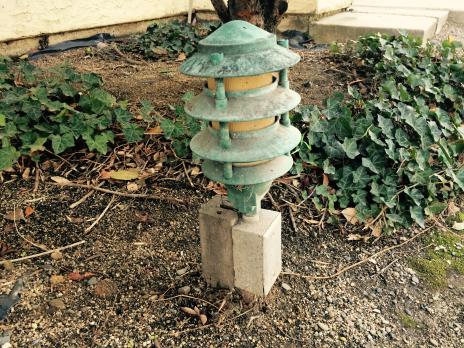
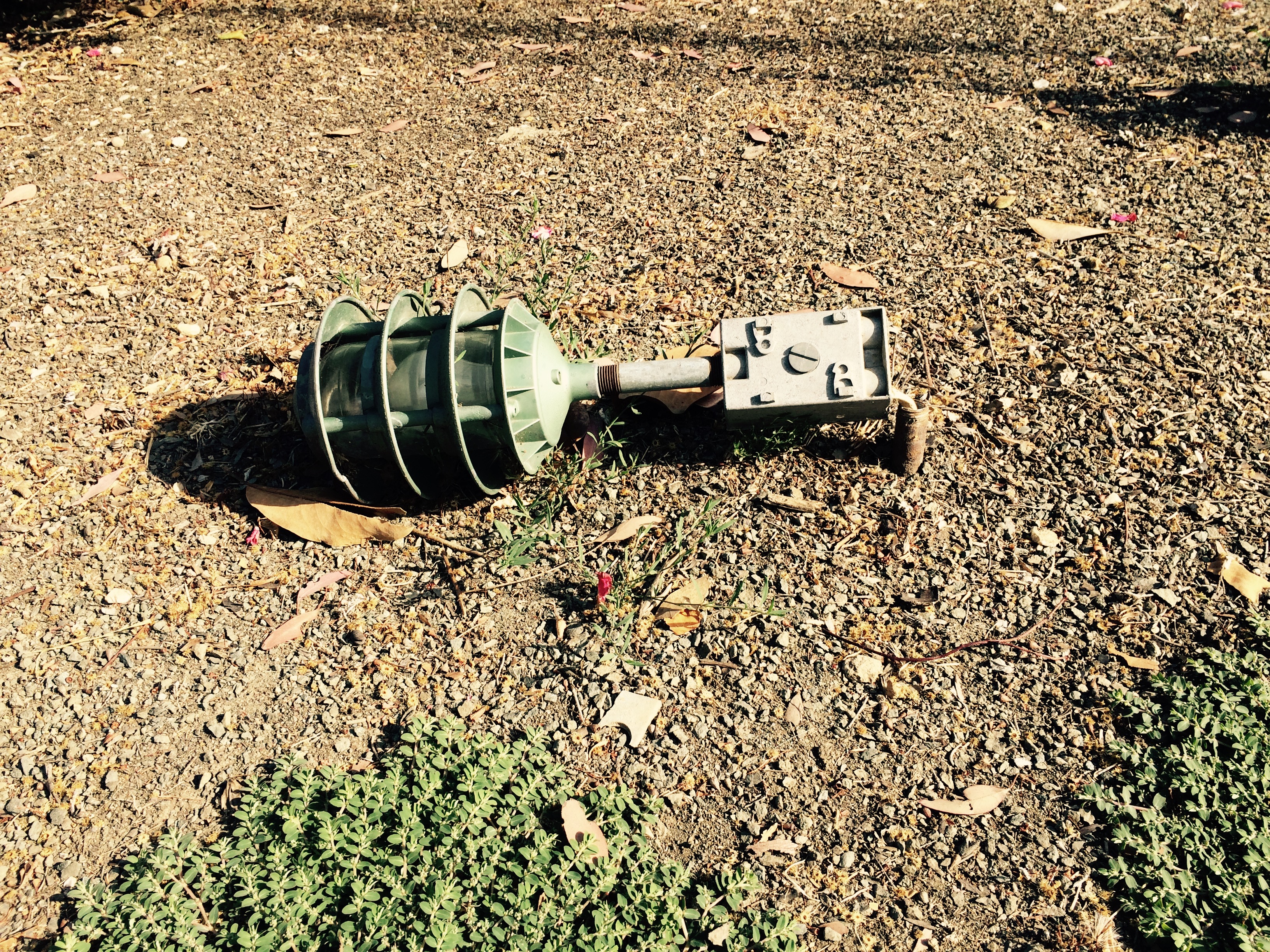
This landscape light was installed very well. It is supported by a small wooden post. If it were not supported by this post it would require a minimum of two pipes for support. Many times these lights are supported by only one pipe which renders them very prone to being toppled over as seen in the picture at right.
This landscape light was supported by only one pipe. The National Electrical Code requires a minimum of two pipes for support when there is no supplemental support such as a wooden post as seen in the picture at left.